Welcome to Vienna! When travelers look for a Vienna travel guide, they’re often seeking things to do in this city of imperial palaces, classical music, and enchanting cafés. They want an itinerary covering both grand boulevards and hidden nooks. Some yearn for historical context: the seat of the Habsburg Empire, Beethoven’s stomping ground, the waltz capital. Others simply crave a memorable European getaway, complete with pastries and museum visits.
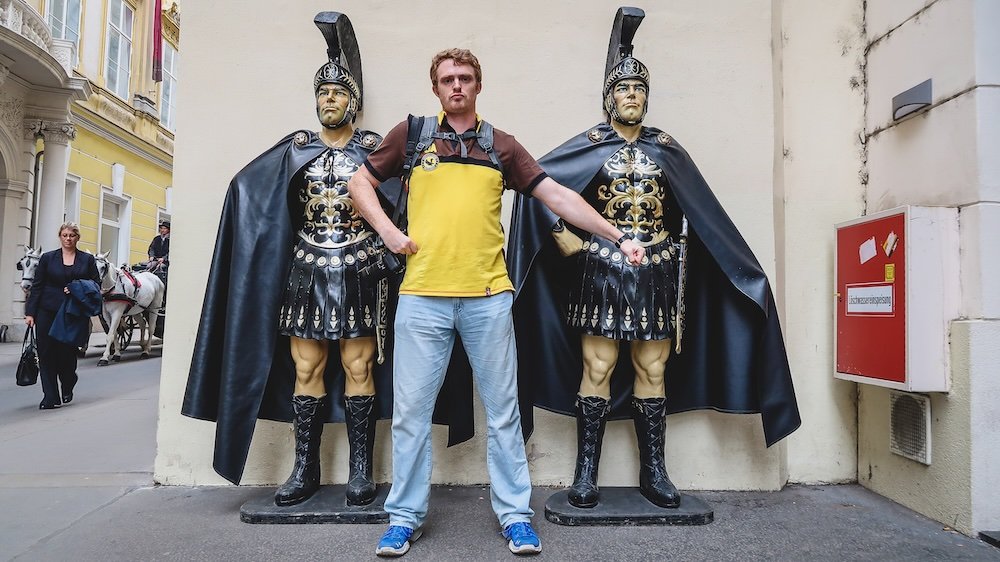
But weaving through Vienna’s layers of culture can feel daunting. Where to start in a city loaded with Baroque monuments, top-tier art museums, and centuries-old coffeehouse traditions? Which neighborhood is best for budget travelers, or for those seeking a fairytale vibe? And how to dodge tourist traps selling overpriced schnitzels? This travel guide aims to de-stress that planning, mapping out essential stops and local favorites. We’ll clarify how to jump on the U-Bahn, savor an authentic Sacher Torte, and plan easy day trips to nearby scenic towns.
Our Travel Video From Vienna, Austria on Samuel and Audrey YouTube Channel: Nomadic Samuel + That Backpacker hosting
Why Vienna?
From backpackers chasing budget dorms to couples seeking romantic strolls, families wanting a safe European capital, or history buffs craving Habsburg lore—Vienna beckons to a wide range. If you’re a classical music enthusiast, a pastry fiend, or an architecture admirer, you’ll find your bliss here. We’ll help you shape your trip whether you have a weekend or a leisurely week. Even if you’re a returning visitor, new corners emerge.
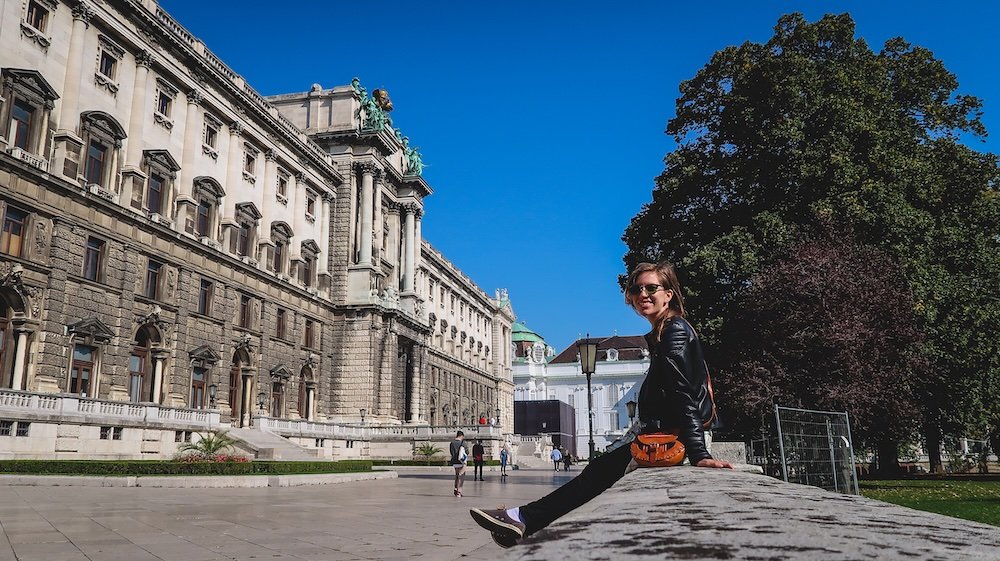
Imagine yourself chatting in a cozy café near St. Stephen’s Cathedral. You’re nibbling on apple strudel, the aroma of coffee swirling around. You’re considering how the ring road leads past glorious palaces, how the city’s vibe shifts after dark, and why a short train ride can whisk you to wine-producing villages. By the end, you’d have the confidence to craft your own Vienna itinerary. Ready to discover the city of waltzes, cafés, and imperial magnificence? Let’s go.

Cultural Experiences in Vienna
Begin your time in Vienna by getting Schönbrunn Palace ticked off on your list of things to see. Listed as a UNESCO World Heritage Site, it is considered by many to be Vienna’s top historical attraction, as it once served as a hunting ground and royal residence for Holy Roman and Austrian monarchs.
Its interior is every bit as regal as you’ve made it out in your head to be, and the exterior doesn’t disappoint either, as its broad lawns, prominent fountains and intensely colorful rows of flowers, trees and hedges will be pleasing to anyone who appreciates natural beauty.
Our Food Vlog on Samuel and Audrey YouTube Channel: Nomadic Samuel + That Backpacker hosting
That isn’t all though, as Tiergarten Schönbrunn, located on the grounds of the palace, also warrants a visit. Opened in 1752 to serve as a menagerie for the royal court, it today counts as the oldest zoo in the world.
Possessing a mixture of typical zoo animals plus 18th century Versailles style structures makes this place a definite highlights if you are into these types of attractions.

More Experiences in Vienna
Vienna is also well known for the exceptional quality of its performance artists, the best of whom you can see in action at the State Opera House.
The actors and singers here are among the busiest of their kind in the world, putting on upwards of 60 distinctive operas and ballets, spread over 300 nights per year.
As such, the chances of a production being on during your time in Vienna are very high, so plan on attending a show during your time here.
Our Food Vlog on Samuel and Audrey YouTube Channel: Nomadic Samuel + That Backpacker as hosts
If you’d prefer to participate in this city’s culture instead of being a spectator, be sure to attend a ball if you are traveling through the region between late November and the end of February. It is at this time of year that Ball season is on, with various professional guilds, government agencies, and associations putting on elaborate to-do’s that seek to celebrate the waltz, which is a dance style that was born here.
The first ball of the season is held by the Red Cross in late November, one of the most fabulous is celebrated at the Imperial Palace on New Year’s Eve, and the last of the majors is the Johann Strauss ball, held in mid-February. Plan your travels accordingly, and dress to impress!
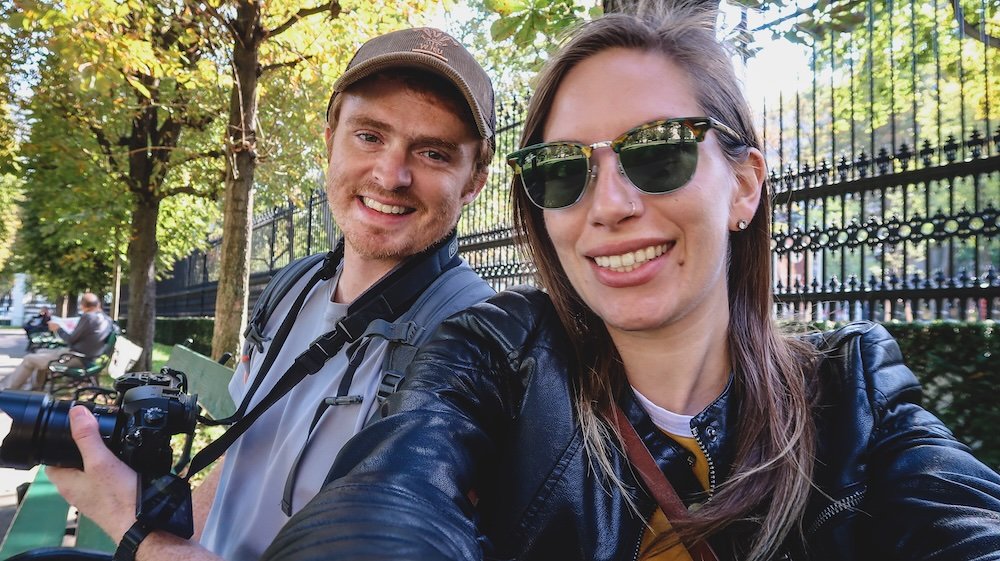
Other Attractions in Vienna
If you are a museum fanatic, Vienna will not let you down either, as it is home to a district known as Museumsquartier. One of the top ten arts districts in the world, the Museumquartier is home to fine arts (Leopold Museum), architecture (Architekturzentrum Wien) and contemporary art (Kunsthalle Wien) museums that will keep a culture hound busy all day and into the evening!
Horse lovers will also love Vienna, as it is here where the world famous Spanish Riding School is located. While its primary function is indeed to serve as a place where jockeys learn to ride Lipizzan horses in the classic style, its long history has also made it into a tourist attraction. With riders going through their routines on a dirt surface, but below crystal chandeliers and white walls, the spectacle is a unique one even for those that aren’t into equestrian sports.

Have kids you need to keep entertained, or still young at heart yourself? If either case is true, find time in your schedule to pay a visit to Prater, a large park in Vienna that contains amusement facilities in one of its corners. Known as the Wurstelprater, its Ferris Wheel, bumper cars, and roller coasters are open from the middle of March to the end of October, giving you an option to appease your restless kids through most of the warmer months of the year.
![]()
Top 20 Things To Do in Vienna, Austria For Visitors
Below is our list of 20 recommended things to do and see in Vienna. Let’s embark on this imperial-meets-modern city adventure!
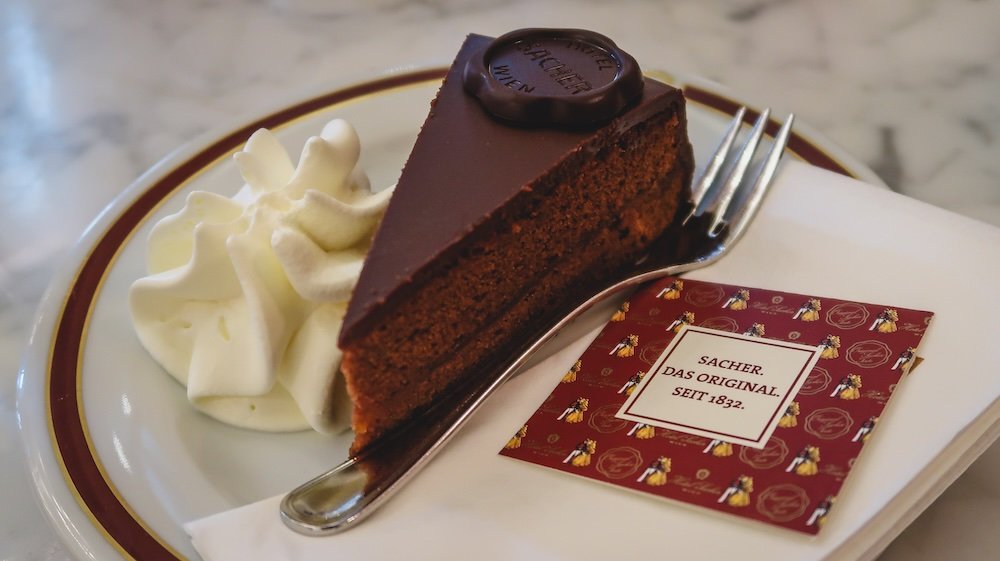
1) Cafe Sacher for Viennese Chocolate Cake (Sachertorte / Sacher Torte)
Stepping into Cafe Sacher feels like stepping back in time. Polished wood, warm lighting, and uniformed waiters greet you with classic Viennese charm. The star attraction? The Sachertorte, a legendary chocolate cake layered with delicate apricot jam. Tasting it with whipped cream on the side is tradition—each bite blends rich cocoa depth with subtle fruit sweetness. The café’s location near the Opera House adds a refined ambiance. Don’t rush; savor the luscious cake along with a cup of Wiener Melange coffee for a complete local indulgence.
- Arrive mid-morning or late afternoon to dodge peak lines.
- The interior exudes opulent red upholstery and gilded mirrors.
- Snap a picture of your cake if you like social media bragging rights.
Tip: Pair your slice of Sachertorte with a Vienna coffee specialty. The synergy of flavors is heavenly.

2) Ring Road (Ringstraße) in the Old Town (Innere Stadt) for Parks, Museums and Palaces
The Ringstraße encircles central Vienna like a grand boulevard showcasing the city’s architectural might. Along these stately streets, you’ll pass the opulent State Opera, the imposing Hofburg Palace, and stately museums. Created in the mid-19th century on the site of old city walls, it exemplifies the grandeur of the Austro-Hungarian Empire. Stroll or hop a tram: each curve reveals another regal building or manicured park. The entire loop can feel like an open-air museum, blending Renaissance, Baroque, and neoclassical styles. At night, lights illuminate the facades, transforming the ring into a glittering stage.
- Tram lines 1 and 2 follow the Ring, perfect for scenic rides.
- Look for the Parliament building’s Greek-inspired columns and statues.
- Burggarten and Volksgarten parks are easily accessed for a greenery break.
Tip: Grab a day pass for public transport. Then ride the tram around the Ring multiple times at different hours to enjoy shifting light.
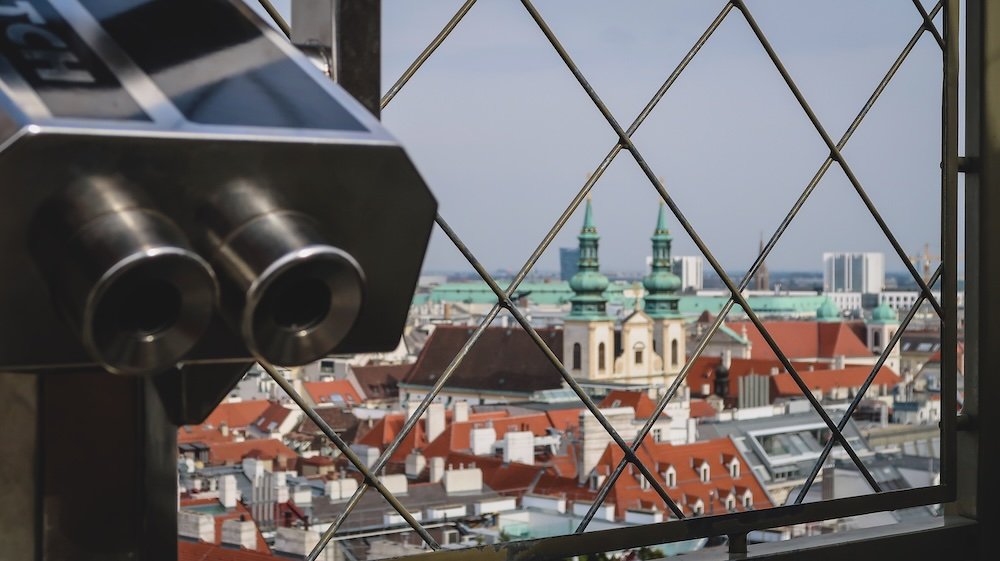
3) St. Stephen’s Cathedral (Stephansdom) for Views of Vienna (Wien)
St. Stephen’s Cathedral, or Stephansdom, is Vienna’s Gothic heart rising above the bustling Stephansplatz. Its tiled roof glimmers in geometric patterns, a colorful icon visible from many city angles. Venturing inside, you’ll find ornate altars, centuries-old tombs, and a hush broken only by footsteps on ancient stone. Adventurous travelers can climb the steep spiral steps to the tower viewpoint—on clear days, the city and distant hills unfold before you. Outside, street performers and horse-drawn carriages fill the square, adding a lively aura. The blend of medieval mystery and modern city life is mesmerizing.
- Check opening hours if you want a guided tour or tower climb.
- The North Tower is shorter; the South Tower climb is more challenging but yields epic panoramas.
- Light a candle inside for quiet reflection if you appreciate the spiritual atmosphere.
Tip: Head to the tower in the morning for fewer crowds and calmer ascents up those twisting stairs.

4) Mozart’s House (Mozarthaus Vienna) on Domgasse 5 (1784 to 1787)
In this Mozarthaus on Domgasse, Wolfgang Amadeus Mozart composed masterpieces in the 1780s. The museum brings to life the daily existence of a genius who loved lavish gatherings yet struggled with finances. Audio guides narrate stories of his compositions and personal anecdotes. Original manuscripts and period furnishings transport you to an era of candlelit concerts. The staircases and small rooms remind you that brilliance often flourishes in humble corners. It’s a must for music buffs wanting a glimpse of the composer’s real life beyond the stage.
- Book tickets online to skip lines in peak tourist season.
- Photography might be restricted in certain sections—check signage.
- Engage with interactive exhibits that detail Mozart’s influences in Vienna.
Tip: Combine your Mozarthaus stop with a short stroll to St. Stephen’s, immersing yourself in the same neighborhood Mozart roamed centuries ago.
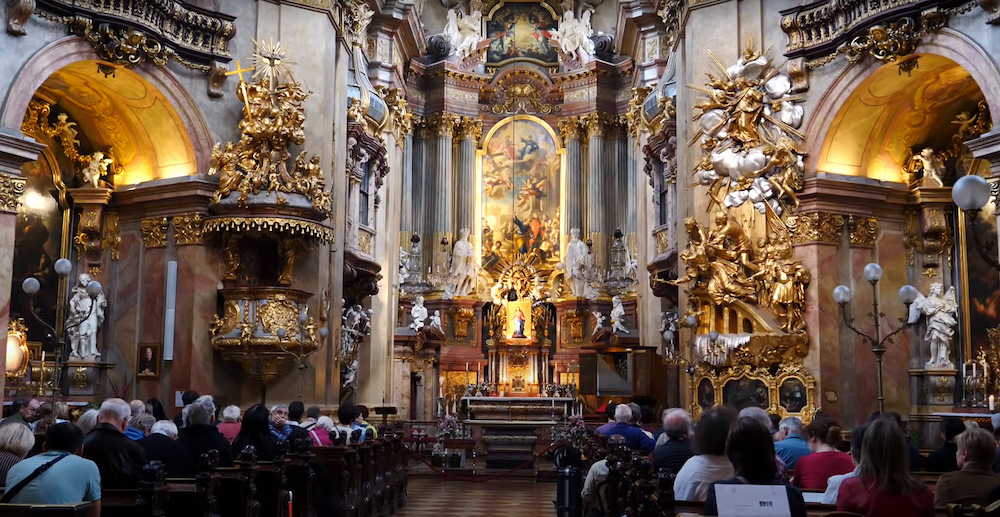
5) St. Peter’s Church in Vienna (Peterskirche)
St. Peter’s Church nestles near the bustling Graben street, an unassuming facade that leads to an ornate Baroque interior. Stepping inside unveils gilded columns, rich frescoes, and an imposing dome shimmering with religious artwork. The church’s compact but lavish style stems from Baroque influences that emphasize drama and opulence. Candlelit evenings sometimes bring organ recitals echoing off marbled walls. You might catch a short worship service or simply savor the hush broken by the distant hum of city life outside. It’s a spiritual oasis amid the commercial hustle around Graben.
- Modest dress is appreciated for respect.
- Admission is free, but donations help maintenance.
- Nighttime recitals can be magical if you prefer atmospheric music experiences.
Tip: Peek up at the dome’s fresco. The 3D illusions can be mesmerizing with just the right angle.
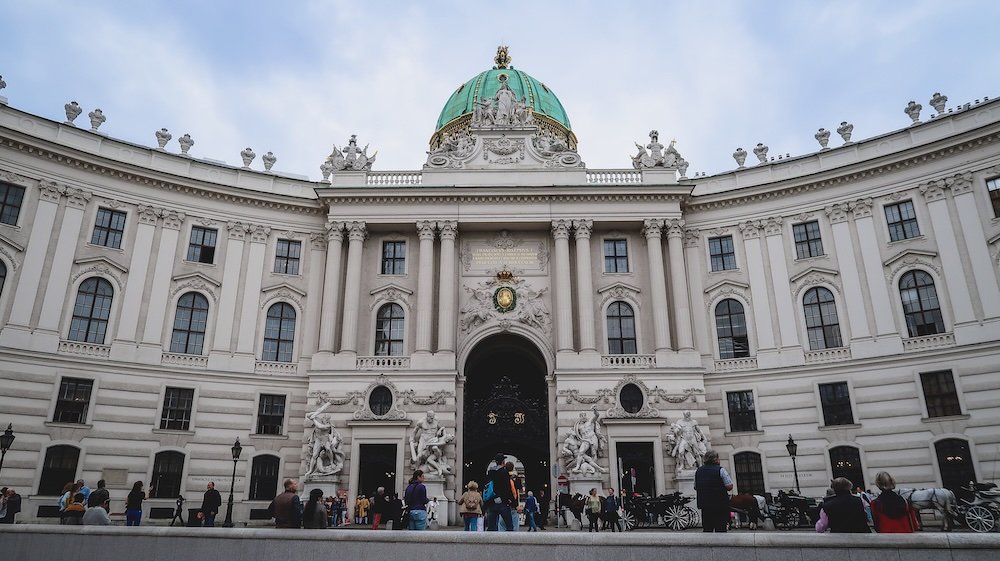
6) Hofburg Palace (Sisi Museum, Imperial Apartments & Silver Collection) + Roman Ruins
Hofburg Palace once housed Habsburg emperors, a sprawling complex that now holds museums, a chapel, and the Austrian presidential offices. The Sisi Museum reveals Empress Elisabeth’s personal story—shy, restless, yet iconic in her era. You can wander the Imperial Apartments, glimpsing lavish drapes and baroque furniture where royals dined and hosted. Downstairs, the Silver Collection showcases tableware that once sparkled during grand imperial banquets. Outside, you’ll find remnants of Roman ruins, proof that Vienna’s lineage dates back centuries. Merging imperial grandeur with archaeological layers, the Hofburg epitomizes Vienna’s rich tapestry.
- Check combos for discounted entry to all sections.
- Audio guides enhance the Sisi Museum’s emotional narrative.
- The Hofburg grounds also include the Spanish Riding School—famous for Lipizzan horses.
Tip: Plan two to three hours for a deeper museum dive—there’s a lot to see if you’re a history buff.
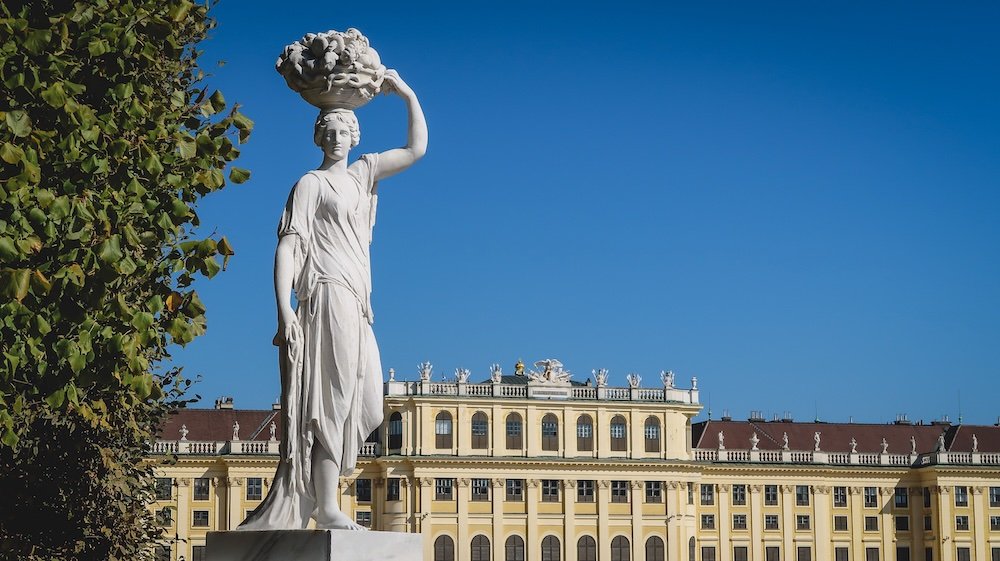
7) People’s Garden Park of Vienna (Volksgarten)
Volksgarten sits near the Hofburg, a tranquil park bursting with rose gardens and classic statues. The meticulously trimmed lawns and scenic fountain corners evoke a dreamy, old-world ambiance. It’s a popular site for locals seeking lunchtime strolls, with couples snapping romantic photos amid rose blossoms. In warm months, the garden brims with color—pastels, vibrant reds, lush greens. The Temple of Theseus stands in the center, adding a Greek-inspired flourish. Whether you recline on a bench or snap quick pictures, it’s a restful break from city crowds.
- Early mornings see fewer visitors, ideal if you want serenity.
- Rose blooms peak from late spring to early summer.
- The garden is near other ring attractions, making it easy to slot into your day.
Tip: Grab a pastry from a nearby café to munch as you amble among the roses. Pure Viennese bliss.

8) Schönbrunn Palace (Schloss Schönbrunn) + Palace Park
Schönbrunn Palace stands as a UNESCO World Heritage Site and the epitome of Habsburg splendor. Inside, the imperial rooms dazzle with gold accents, frescoes, and carefully preserved royal décor. Outside, expansive gardens invite leisurely strolls, culminating in the Gloriette structure perched on a hill. Kids love the zoo (one of the world’s oldest), while horticulture fans delight in the Palm House. In summer, classical concerts sometimes echo in the courtyard, blending music with historical magnificence. Visiting can span hours if you roam the labyrinth, gardens, and museum exhibits.
- Book a timed palace ticket online; lines can stretch.
- The Gloriette’s rooftop viewpoint offers a sweeping city panorama.
- The zoo features giant pandas—a highlight for families.
Tip: Wake up early for an 8 a.m. arrival. The palace is gorgeous in soft morning light minus the throngs of tourists.

9) Nightlife in Vienna with Friends
Vienna’s regal days transition into vibrant nights. If you think the city dozes off by dusk, think again. Cozy wine taverns known as heurigers serve local vintages, while modern clubs spin dance beats. Trendy bars populate districts like the Bermuda Triangle (near Schwedenplatz), where pub crawlers gather. Others prefer jazz clubs hidden in old vaulted cellars. Whether you crave sophisticated cocktails or a casual beer among lively chatter, Vienna’s nightlife pulses with variety.
- Some clubs enforce dress codes—smart casual ensures entry.
- Heurigers typically close earlier than city bars, so check schedules.
- Plan late-night transport—night buses or safe cabs are best.
Tip: Taste local wines at a heuriger. The relaxed vibe and acoustic music feel distinctly Viennese.
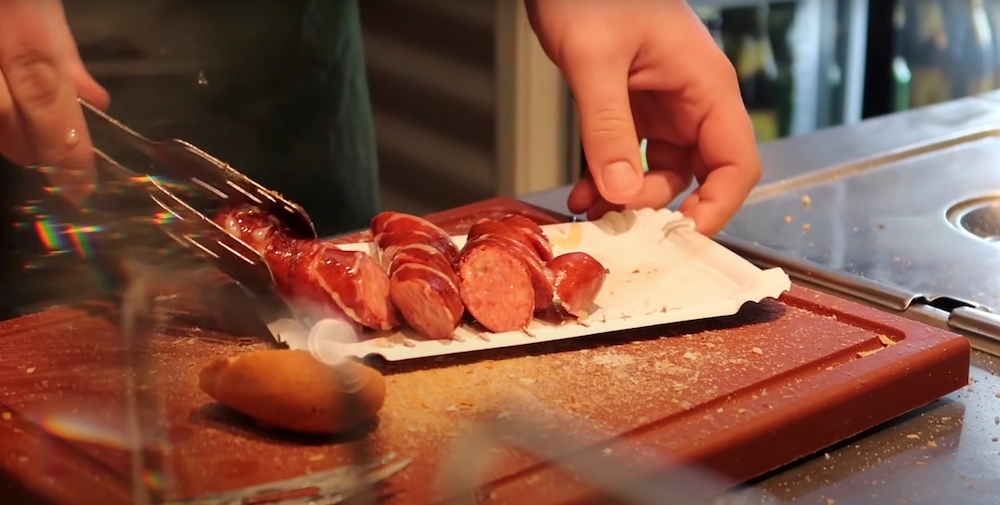
10) Street Food in Vienna Eating Käsekrainer (Sausage with Cheese)
Street sausage stands (Würstelstände) dot corners across Vienna, feeding hungry locals day and night. Käsekrainer, a juicy sausage infused with melted cheese pockets, is a crowd-favorite. The vendor slices it, pairs with a bun or a small paper plate, plus mustard or ketchup. One bite yields smoky, cheesy warmth—hard to resist. Late nights, you’ll spot partygoers grabbing a Käsekrainer fix. It’s humble yet quintessentially Austrian street fare.
- Ask for sweet vs. spicy mustard; sweet is mild, spicy has more zing.
- Some stands also sell Leberkäse (meat loaf) if you want variety.
- Sides might include pickles or a bread roll.
Tip: Avoid drips on your clothes by leaning over the plate—Käsekrainer can ooze delightful cheese.

11) Vienna Vineyards for Wine Tastings
Few global capitals boast active vineyards within city limits, but Vienna is special that way. Hillsides near Grinzing or Nussdorf produce white wines like Grüner Veltliner or Riesling. Wine taverns (Heuriger) open seasonally, inviting guests to sample fresh vintages in rustic courtyards. Strolling vineyard paths at dusk, with the city below, feels dreamy. The ambiance is laid-back: think wooden benches, hearty snacks, and live folk tunes. Sipping local wine while the sun dips behind spired rooftops is a memory to cherish.
- Late spring and early autumn are top times for visiting, coinciding with new wine releases.
- Some heurigers lack English menus, so embrace pointing or minimal German phrases.
- Plan your ride home—buses or cabs from hillside areas might be limited late.
Tip: Check local listings for heuriger “open days.” They rotate in the neighborhoods, so you might find a hidden gem.

12) Viennese Breakfast in Vienna, Austria
A typical Viennese breakfast involves fresh bread rolls, butter, jam, sometimes cold cuts or cheese, and a soft-boiled egg. Or you might prefer a sweet fix: pastries, croissants, or jam-filled doughnuts. Of course, coffee is non-negotiable—try a Wiener Melange or cappuccino. Many cafés serve breakfast sets that include all these delights on a tidy platter. Mornings in Vienna can be leisurely if you give yourself time to soak up the café’s calm. Sipping coffee while reading a newspaper or simply people-watching is a cherished local ritual.
- If you see “Frühstück,” that’s German for breakfast on menus.
- Some cafés also offer Champagne breakfasts—an indulgent treat.
- Kids might enjoy a simple cocoa or sweet pastry to start the day happily.
Tip: Explore smaller, off-tourist cafés for better deals and a more genuine vibe.
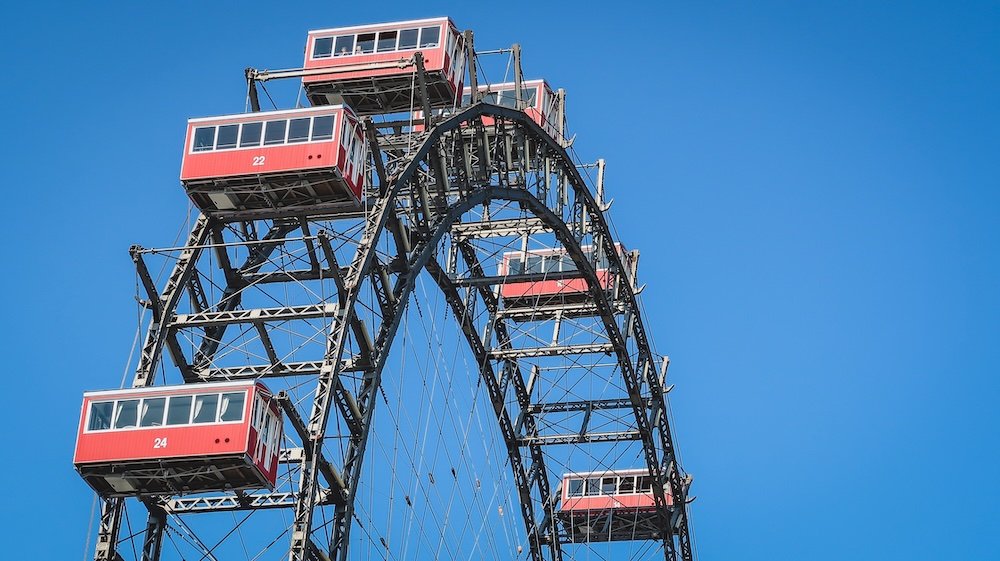
13) Prater Park + Wiener Riesenrad Ferris Wheel (1897)
Prater is Vienna’s historic amusement park, home to the iconic Wiener Riesenrad Ferris wheel, installed in 1897. Step into one of the wooden gondolas for a slow, nostalgic ride with city vistas. The park’s carnival ambiance includes roller coasters, haunted houses, and snack stalls. Families come for weekend fun, while couples find romance in the old-world charm. After sunset, neon lights glow and rides whir, injecting energy. Cheap thrills meet vintage charm in a dynamic carnival setting.
- The Riesenrad ride is about 15 minutes—get your camera ready.
- Surrounding booths sell cotton candy, pretzels, and beer.
- Avoid major holidays if you dislike crowds and lines.
Tip: Check the small museum inside the Ferris wheel entrance that narrates its historic significance.

14) Austrian Food Eating Schnitzel, Goulash and Apple Strudel
Austrian cuisine thrives on hearty, comforting dishes. Schnitzel (breaded and fried veal or pork) is a beloved staple—crispy outside, tender inside. Goulash has Hungarian origins but also claims a big place on Viennese tables, served with bread or dumplings. Apple Strudel ends the meal sweetly, flaky pastry hugging spiced apples. Many restaurants in the Innere Stadt specialize in these classics, often in centuries-old dining rooms. Savoring these dishes with local beverages, like a crisp white wine or beer, forms a fully Austrian experience.
- Wiener Schnitzel is traditionally veal, but pork versions are common and cheaper.
- Goulash can vary from mild to quite spicy—ask if you have a preference.
- Apple Strudel tastes best warm, often with whipped cream or vanilla sauce.
Tip: Seek smaller Gasthäuser (taverns) for authentic flavors and friendlier prices compared to touristy hotspots.

15) Hundertwasserhaus for Fascinating Architecture
The Hundertwasserhaus showcases the whimsical vision of artist Friedensreich Hundertwasser. Its exterior flaunts bright colors, wavy lines, and an aversion to rigid forms. Trees sprout from balconies, and the floors slope unpredictably. It’s a private apartment complex, so you can’t roam inside, but the façade alone is a visual delight. Next door, a museum-shop area celebrates Hundertwasser’s quirky creations. The structure stands out amid conventional city blocks, championing nature-friendly design.
- If you want more Hundertwasser art, the Kunst Haus Wien (a short stroll away) is a dedicated museum.
- The house is best viewed in daytime—sunlight intensifies those bold hues.
- Photography is free from the street, but be mindful of residents.
Tip: Look for small details, like mosaic tiling or odd-shaped windows—each aspect reveals the artist’s playful spirit.
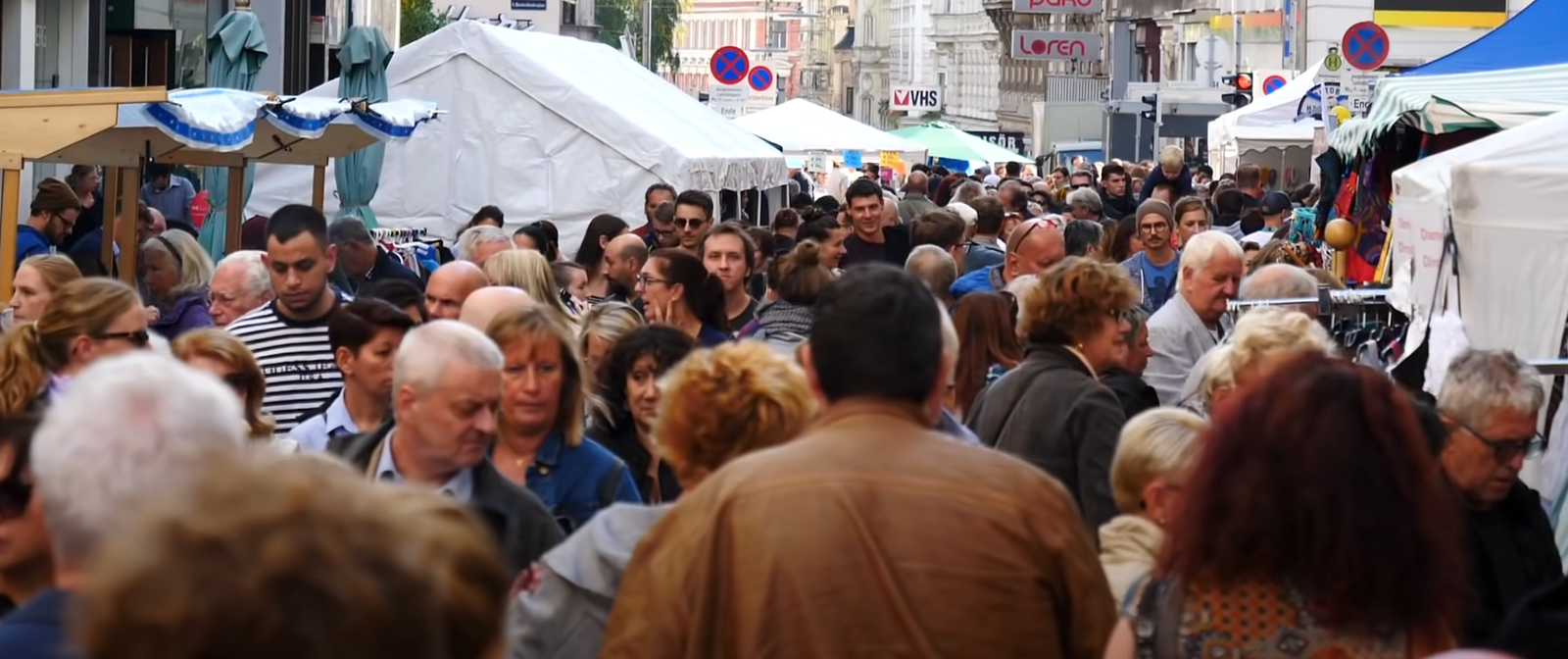
16) Flea Market in Vienna (Recommended Naschmarkt)
Naschmarkt typically transforms on certain days into a bustling flea market. Vendors sell antiques, vintage clothes, vinyl records, plus random knickknacks. The surrounding permanent stalls offer produce, spices, and international bites. Tourists and locals rummage together, seeking hidden gems or cheap souvenirs. It’s lively, loud, and occasionally chaotic, but undeniably fun. If you’re open to haggling and exploring, you might leave with a unique memento.
- Arrive early for the best finds—by midday, prime items can vanish.
- Watch your bag; crowds can attract pickpockets.
- Bring small bills for easier negotiations.
Tip: Sample some fresh fruit or a local pastry from the permanent market stalls if you need a midday energy boost.

17) Museum Quarter [Museumsquartier] (Mumok + Kunsthalle Wien + Leopold Museum)
Vienna’s Museumsquartier clusters multiple cultural venues in a vast courtyard. The Mumok focuses on modern art, the Kunsthalle showcases contemporary exhibitions, and the Leopold Museum brims with Austrian art (think Egon Schiele). Outdoor seating areas often host relaxed gatherings, especially in summer. The complex sometimes stages festivals or open-air performances, melding art with city life. There’s a youthful, creative energy, with students sketching or chatting about exhibits. You could easily spend an afternoon wandering from one museum to another.
- Combo tickets might save money if you plan multiple museum visits.
- The courtyard cafés serve snacks and coffee, a perfect art break.
- Keep track of special exhibits—temporary shows can be truly captivating.
Tip: Pace yourself. Each museum can be immersive, so maybe do two in a day, not all three at once.
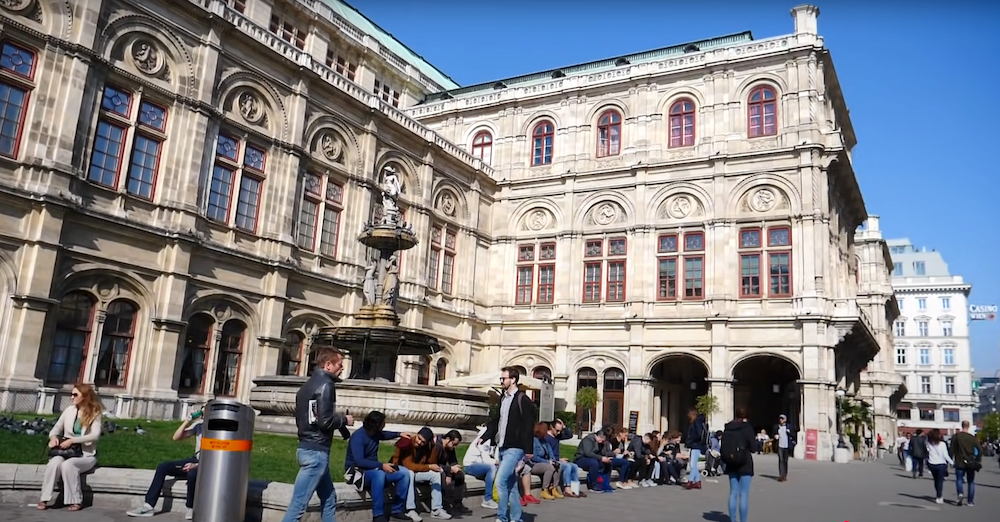
18) Maria-Theresien Platz (Museum of Natural History + Museum of Art History + Opera)
Between the Museum of Natural History and the Museum of Art History stands Maria-Theresien Platz, celebrating Empress Maria Theresa’s legacy. The symmetrical architecture and lush gardens reflect a time of Habsburg grandiosity. Each museum brims with treasures: dinosaurs and meteorites on one side, old masters and Egyptian relics on the other. The Opera House is also nearby, continuing the theme of cultural enrichment. Tour groups mingle with students, and the gentle hum of traffic frames the regal setting. It’s a central highlight if you love epic building facades and a sense of imperial might.
- The museums are quite large—pick sections that interest you most.
- The plaza sometimes hosts markets or events, especially near Christmas.
- Opera fans can check daytime tours of the Opera House for behind-the-scenes glimpses.
Tip: Wait until dusk to see the museums’ exteriors floodlit, forging a fairy-tale vibe in the plaza.
Our Nifty Food Vlog From Vienna, Austria on Samuel and Audrey YouTube Channel: That Backpacker + Nomadic Samuel as hosts
19) Wiener Melange (Coffee) + Mozart Cake + Strudel at Aida Coffeehouse
Aida is a local chain of pink-themed coffeehouses known for old-school pastries and comfy vibes. There, you can sip a frothy Wiener Melange—a gentle coffee creation akin to a latte—and munch on a sweet treat. Many branches also serve Mozart Cake, a marzipan-chocolate layered delight. If that’s too sweet, try the crisp apple strudel with a swirl of whipped cream. The pink décor might feel retro, but it’s part of the brand’s charm. It’s casual, affordable, and perfect for a quick sugar rush while exploring.
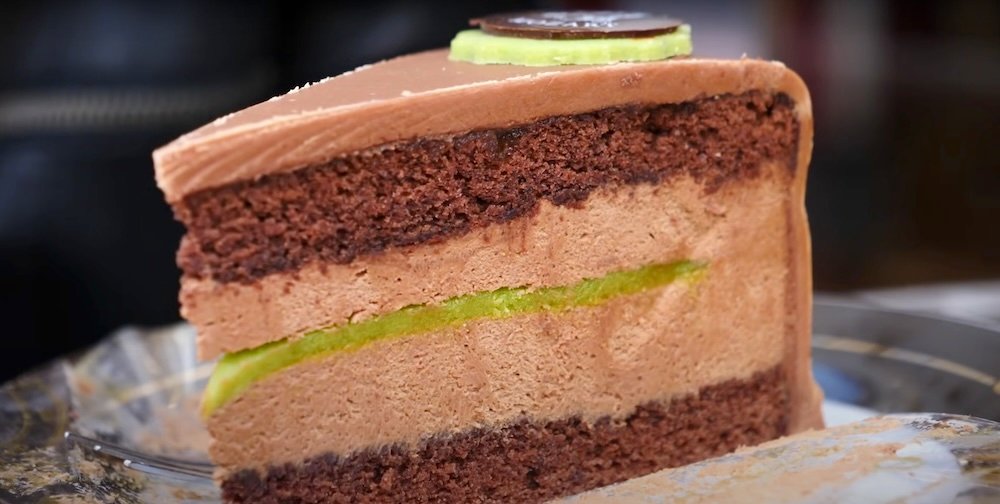
- Some Aida outlets don’t offer Wi-Fi—just unplug and enjoy your dessert.
- The coffee brand is typically mild, suiting those who dislike overly strong roasts.
- Staff may speak limited English, but pointing at the display works wonders.
Tip: Compare pastries in the glass case first. Visual cues can guide your sweet pick if you’re unsure of names.

20) Transportation around Vienna Taking the Metro (U-Bahn)
Vienna’s U-Bahn system is clean, efficient, and your best ally for crossing the city. Lines U1 through U6 connect major districts, from the center’s cathedrals to suburban enclaves. Trains run frequently, even late, though weekend schedules can differ. Ticket machines have English options, so grabbing a single-ride or day pass is straightforward. Fines are steep for fare evaders—be sure to validate or carry proof. With the U-Bahn, you can chain multiple sights easily in one day.
- Multi-day passes might be worth it if you’re planning many rides.
- Stations often have a small convenience store or bakery for quick snacks.
- Mind rush-hour crowds, especially near Stephansplatz or Karlsplatz.
Tip: Use the Wiener Linien app or a paper map if you prefer offline navigation, ensuring you hop the right line.
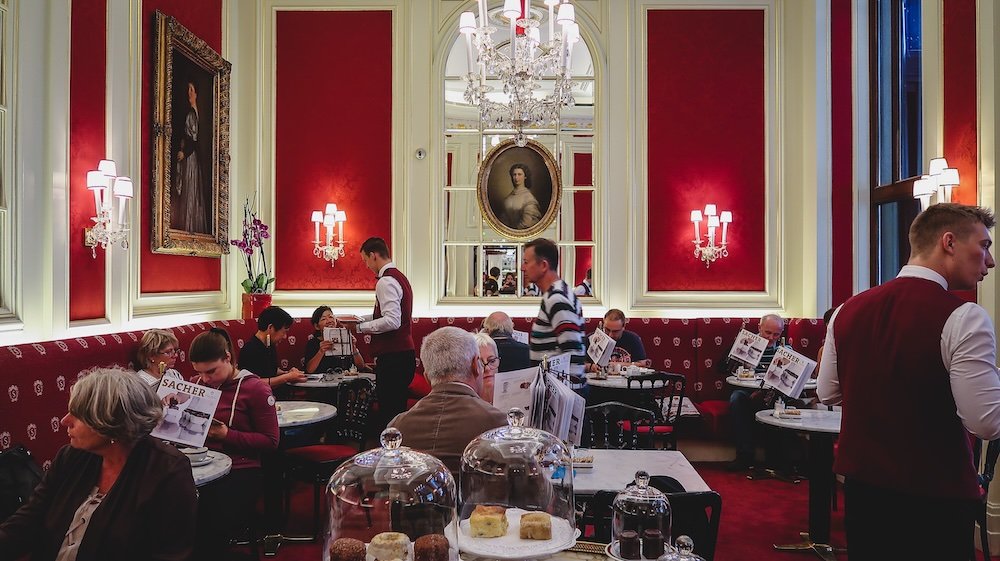
What To Eat and Drink in Vienna, Austria
Introduction: Culinary Traditions Meet Modern Twists
Vienna merges classic Habsburg dining with contemporary gastronomic flair. Wander any street and you’ll find old taverns next to sleek bistros. The city’s hallmark is coffeehouse culture—an intangible aura where you linger over a cappuccino or Wiener Melange, flipping through newspapers. But beyond coffee, hearty dishes like schnitzel, Tafelspitz (boiled beef), or sweet dumplings beckon. Let’s break down the must-try bites and drinks.
Our Fun Food Vlog From Vienna, Austria on Samuel and Audrey YouTube Channel: That Backpacker + Nomadic Samuel hosting
Hearty Classics
- Wiener Schnitzel: Thin, breaded veal or pork cutlet fried to golden perfection.
- Tafelspitz: Boiled beef served with root veggies, apple-horseradish sauce, and crispy potatoes.
- Goulash: Borrowed from Hungary but embraced in Vienna—rich stew of beef, onions, paprika.

Each dish pairs well with local beer or a glass of Grüner Veltliner wine. These hearty plates reflect a city that survives cold winters with warm, filling meals.
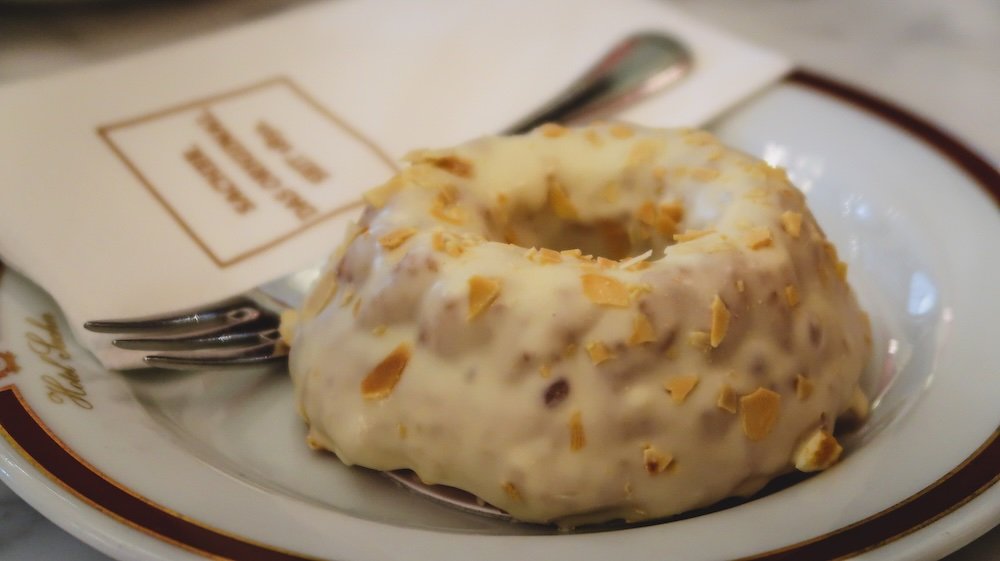
Sweet Temptations
Vienna brims with pastries. The famed Sachertorte or apple strudel remain top favorites, but you’ll also see soft Krapfen (jam donuts) or rich chocolate cakes. Café Central, Café Demel, and Café Sacher top the café list, though smaller places also dazzle. If you prefer lighter desserts, some spots serve fruit tarts or layered sponge cakes. The smell of fresh pastry can lure you in at any hour.
Tip: Explore lesser-known Konditorei (pastry shops) for more local prices and fewer queues than big-name cafés.
Coffee Culture
Vienna’s coffeehouse tradition is UNESCO-worthy, an institution of polite service and slow sipping. Wiener Melange (similar to cappuccino), Einspänner (espresso topped with whipped cream), or a classic black coffee called Großer Schwarzer are standard picks. Expect a relaxed pace—waiters rarely rush you. Many coffeehouses display old newspapers on wooden holders, encouraging an unhurried read. This atmosphere fosters intellectual chat or quiet reflection, a hallmark of Viennese society.
- If you want minimal fuss, ask for a “Verlängerter,” basically a longer black coffee.
- “Kleiner Brauner” is a small coffee with cream, less milky than a Melange.
- Some coffeehouses are cash-only—check signs.
Street Food & Snacks
Between major sights, you might crave quick bites. Wiener Würstl stands sell Käsekrainer (cheese-infused sausage) or hot dogs stuffed with tangy sauces. The ubiquitous Leberkäse (meat loaf) sliced into rolls is also popular. If you see a queue, it’s often worth joining. Late nights or after a concert, these stands stay open and feed hungry passersby. Street eats in Vienna taste robust, bridging tradition with simple convenience.
Tip: Ask for “scharfer Senf” (spicy mustard) if you like a bit of tangy heat.
Wines & Beers
Austria produces distinctive whites, like Grüner Veltliner or Riesling, plus reds such as Blaufränkisch or Zweigelt. Viennese heurigers near city vineyards serve fresh vintages, while restaurants list them by the glass or bottle. Beer options often come from local breweries, offering crisp lagers or malty ales. For a treat, try Sturm—a sweet, partially fermented grape juice available in early autumn. Cheers to a city that marries imperial heritage with gastronomic innovation.

Tours For Visitors To Vienna, Austria
Why Consider Tours?
While Vienna’s easy to navigate solo, tours can deepen your appreciation. Whether it’s a classical music-themed walking tour or a hop-on-hop-off bus, they reduce planning stress. You see highlights, skip lines, or glean local commentary you’d otherwise miss. Let’s break down some top tour categories.
1) Walking Tours
Classic Old Town Walking Tour: Guides lead you through Hofburg courtyards, the Graben street, and key churches like St. Stephen’s. They regale you with Habsburg anecdotes, royal intrigue, and bits of local gossip. Some tours focus on architecture, others on history. A few also toss in pastry stops. Perfect if you want city center highlights minus confusion.
- Check if the tour is free with tip-based funding or a paid group tour.
- If crowds bother you, an early morning or evening slot might be calmer.
- Wear comfy shoes—cobblestones demand it.
Tip: Ask your guide for restaurant or coffeehouse suggestions. They often know hidden gems.
2) Bus and Bike Tours
Hop-On Hop-Off buses revolve around the Ringstraße, hitting major museums, the Opera House, and Parliament. Some lines extend to Schönbrunn or beyond. If you’re short on time or prefer minimal walking, this is your jam. Alternatively, bike tours let you pedal through scenic lanes, discovering quiet squares or river paths. Guides ensure a safe route, weaving in historical tidbits while you cycle.
- Check if your pass is valid one or multiple days for the bus.
- For bike tours, see if gear (helmet, reflective vest) is included.
- Some operators run e-bike tours if pedaling less appeals to you.
Tip: Layer up if biking in cooler months. Viennese weather can shift from sunny to brisk in hours.
3) Palace & Museum Tours
Vienna’s aristocratic legacy begs for guided palace tours. Hofburg or Schönbrunn tours skip lines, lead you through lavish halls, and highlight stories behind the gold-laden walls. The Sisi Museum portion often touches on the Empress’s personal strife. Museum tours can include the Kunsthistorisches Museum or the Leopold, each focusing on remarkable art. Perfect for culture vultures who love curated context.
- Audio guides might suffice if you dislike group tours.
- Book in advance if you visit peak season (May–September or holiday periods).
- Some tours combine multiple sites in one day if you want an all-in-one approach.
Tip: Read reviews—some palace tours are more narrative-driven, others are quick walk-throughs.
4) Food & Wine Tours
Culinary tours roam local markets like Naschmarkt or sample viennoiserie from hidden bakeries. A guide might treat you to small bites of Käsekrainer, pastries, or Austrian cheeses while explaining traditions. Wine tours whisk you to heurigers on city outskirts or the Wachau Valley for scenic tastings. This merges sightseeing with gastronomic delight, a highlight for foodies. You’ll likely end the day full and happy.
- Mention dietary preferences—vegetarian or gluten-free—to see if they can accommodate.
- Some tours end at a tavern or wine cellar, so factor in a relaxed timeline.
- If you can’t handle sweet dessert wines, let your guide know for alt picks.
Tip: Carry small bills if sampling from multiple vendors—some stands don’t accept cards.
5) Themed Tours (Music, Ghosts, etc.)
In a city famed for classical composers, music tours reveal places where Beethoven or Mozart lived or performed. Opera house backstage tours might intrigue fans of the performing arts. If you’re into spookier vibes, ghost or underground tours might show hidden crypts or haunting legends. These specialized tours deepen niche interests. They also offer a break from typical palace-museum circuits.
- Some music tours end with mini recitals or demonstrations.
- Ghost tours typically run at night—dress warmly.
- The city’s smaller group tours can be pricier but more personal.
Tip: Pick just one specialized tour if you only have a short trip, ensuring enough time for broader city experiences.
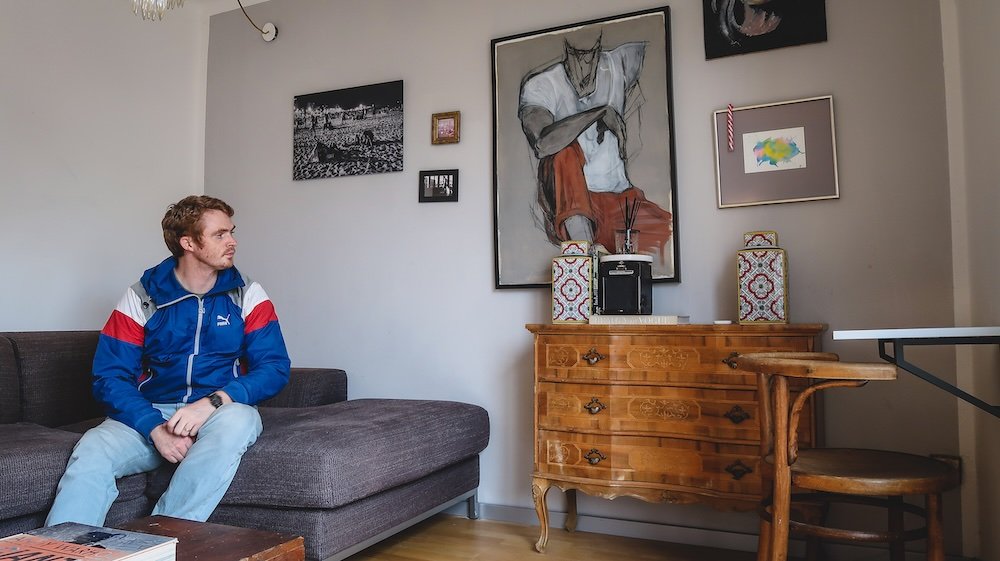
Vienna Accommodations Guide: Hotels, Guesthouses and Hostels
Neighborhood Quick-Glance
Vienna’s districts (Bezirke) revolve in a spiral from the Innere Stadt (1st District) outward. Each zone has unique vibes. Innere Stadt is tourist central, near top attractions. Surrounding districts like Leopoldstadt (2nd) or Landstraße (3rd) are slightly cheaper. Let’s break down options so you can pick what suits your style.
Hotels in the Innere Stadt
If you crave a short walk to cathedrals or palaces, book here. Expect classic, upscale hotels with Baroque flair or modern boutiques set in heritage buildings. Rates can be high, especially near the Ringstraße. Some 5-star properties pamper with spa amenities, afternoon tea, and doormen in crisp uniforms. If your budget allows, waking up to the chime of St. Stephen’s bells or immediate access to fancy coffeehouses is magical.
- Check if breakfast is included—a big perk in pricey areas.
- Distances might be walkable, so you save on public transport.
- Book early for popular months like December (Christmas markets) or summer peak.
Tip: Browse last-minute deals online. Even top hotels occasionally slash rates if occupancy is low on certain dates.
source: Our Accommodation Travel Vlog From Vienna, Austria on Samuel and Audrey YouTube channel
Budget & Mid-Range Spots
Outside the center, mid-range hotels or smaller guesthouses appear, some just a few U-Bahn stops from major sights. Districts 6 (Mariahilf) or 7 (Neubau) are fun, bohemian, and have cheaper lodging. Many boutique hotels strike a balance between modern design and old Viennese charm. Also, chain hotels pop up near train stations like Wien Hauptbahnhof or Westbahnhof, ideal if day-tripping. You still get easy city access without paying Innere Stadt premiums.
- Some mid-range places offer an in-house bar or lounge—great for nightcaps.
- If you see “Pension,” it typically means a family-run guesthouse.
- Neighborhood ambiance might be quieter, letting you rest well.
Tip: Map your hotel’s distance to a Metro station. Under 10 minutes on foot is comfortable for daily commuting.
Hostels & Shared Stays
Backpackers or cost-conscious travelers might opt for hostels in the city’s outer rings or near Westbahnhof. Mixed dorms, female-only dorms, or private double rooms cater to varied preferences. Hostels often have communal kitchens, laundry facilities, and a social lounge. Some host pub crawls or city tours, helping you meet fellow explorers. This fosters a friendly vibe, especially if traveling solo.
- Always read reviews for cleanliness and security.
- Earplugs can be a lifesaver if you’re in a dorm with late-night chatter.
- Check if they offer freebies like breakfast or city maps.
Tip: Prioritize hostels with lockers—storing valuables safely is crucial in shared environments.
Apartments & Airbnb
Longer stays might prefer apartment rentals for cooking or space. Neighborhood selections vary—some near the Naschmarkt or Prater, others in quieter residential pockets. You get more privacy, potentially cost savings if you cook. But do confirm if you want to be central (less commute) or suburban (peaceful vibe). Additionally, Vienna’s short-term rental laws may have restrictions—read listings carefully.
- Many apartments have washers but not always dryers—air drying is common.
- Communication might be via private owners—coordinate key pickup and departure times.
- Some listing photos can be misleading—always check reviews.
Tip: Stay near a well-served bus or tram line if you’re not in the U-Bahn zone. This ensures hassle-free city access.
Final Lodging Notes
Book ahead for peak seasons—Vienna’s Christmas markets or ball season can flood capacity. If you’re flexible, consider off-season (January or mid-fall) for better rates. Always confirm whether your lodging includes city tax or added fees. Many Viennese hotels pride themselves on impeccable service—if in doubt, ask the reception staff for tips on local dining or hidden corners. That personal touch can elevate your city experience.
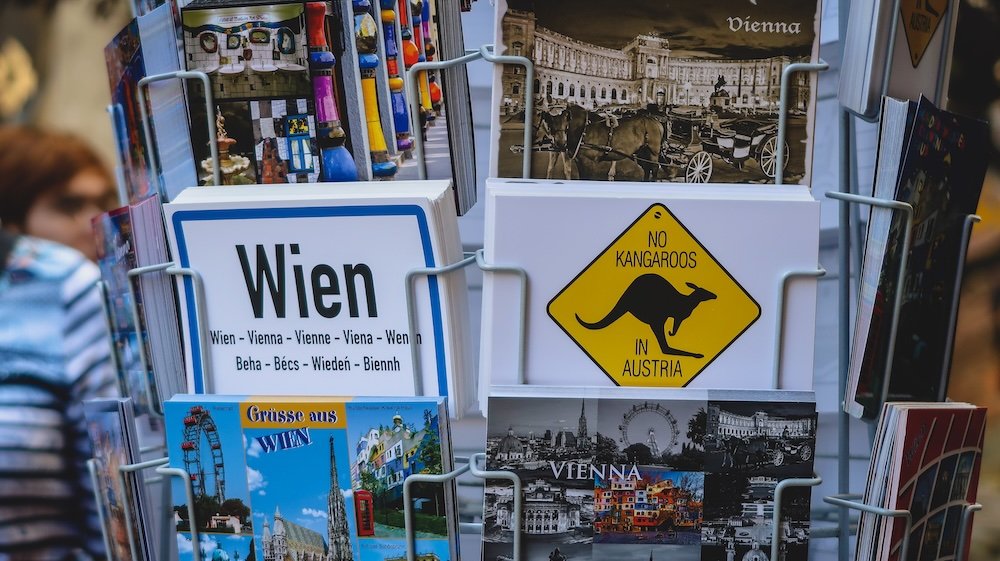
Day Trips From Vienna, Austria
Introduction: Beyond the Imperial City
While Vienna’s loaded with things to do, beyond its boundaries lie charming towns, vineyards, and UNESCO wonders. A day trip can reveal medieval lanes, grand abbeys, or scenic river valleys. Let’s explore prime picks for a quick getaway.
1) Wachau Valley (Melk Abbey and Dürnstein)
Wachau Valley, about an hour from Vienna, is a UNESCO gem known for rolling hills, vineyards, and the Danube’s gentle flow. At Melk Abbey, you’ll see an opulent Baroque masterpiece with stunning library halls. Then Dürnstein enchants with pastel houses, castle ruins, and wine taverns. Day tours or train-boat combos make logistics easy. In warmer months, the valley radiates with green vines and orchard blossoms. You’ll love the scenic boat ride under medieval hilltop fortresses.
- Plan a boat cruise from Melk to Krems, capturing the best Danube vistas.
- Local wines—Grüner Veltliner or Riesling—taste divine in hillside heurigers.
- Dürnstein’s narrow lanes hide boutique shops and local apricot products (like liqueurs or jams).
Tip: Visit in late spring or early fall for mild weather and fewer tourist crowds.
source: Our Travel Guide From Salzburg, Austria on Samuel and Audrey YouTube channel
2) Salzburg (Mozart’s Hometown)
Though further (approx. 2.5-hour train), Salzburg is a showstopper for day-trippers. Mirabell Gardens, the Fortress Hohensalzburg, and Mozart’s birthplace anchor the city’s must-sees. The baroque old town dazzles with spires and pastel facades hugging the Salzach River. If you love “The Sound of Music,” you’ll find tours highlighting film locations. Plus, the mountainous backdrop intensifies the fairytale vibe. Early departures from Vienna’s main station let you explore Salzburg’s highlights and return by late evening.
- Book train tickets in advance for seat reservations.
- The fortress’s cable car shortens the steep climb up.
- Sampling Salzburg’s signature sweets, like Mozartkugel, is almost mandatory.
Tip: Focus on a well-paced itinerary—Mirabell and the old town can fill half a day, leaving time for fortress views.
source: Our Travel Guide From Bratislava, Slovakia on Samuel and Audrey YouTube channel
3) Bratislava, Slovakia
A mere hour by train or boat, Bratislava is another capital city brimming with history. Stroll the compact old town, admire the UFO Bridge’s odd silhouette, and roam the hilltop castle for panoramic Danube glimpses. The cost of dining or souvenirs can be lower than in Vienna. Bilingual or English-friendly signage eases your day. Perfect if you crave a cross-border snippet of a different culture.
- The catwalk at the top of the UFO Bridge has city-skyline vantage points.
- Old town squares host lively cafes—try local Slovak dishes like bryndzové halušky.
- A short bus ride from the city center leads to Devin Castle ruins, scenic by the river.
Tip: Carry some euros or check if the place accepts cards—though Slovakia uses euros, smaller shops might prefer cash.
source: Our Travel Video From Bratislava, Slovakia on Samuel and Audrey YouTube channel
4) Budapest Sampler
Though ideally a multi-day destination, a quick Budapest taste is doable in 2.5-3 hours by train or bus from Vienna. Wander the Danube banks, see Parliament’s gothic spires, climb Buda Castle. Even a short day reveals the city’s contrasting Buda and Pest sides. Warm baths in Gellért or Széchenyi might be time-limited, but you can soak for an hour. The nighttime Chain Bridge illumination evokes a regal aura.
- Check train schedules: early departure is key if wanting enough time in Budapest.
- Foodies can pop into Central Market Hall for quick local bites.
- City tours run half-day segments—handy for a whirlwind overview.
Tip: Focus on 2-3 central spots—no need to overstuff a day if you might return someday for a deeper dive.
5) Vienna Woods & Mayerling
Closer to home, the Vienna Woods offer forested vistas, abbeys, and the famed Mayerling hunting lodge, site of a tragic royal scandal. Day tours highlight Heiligenkreuz Abbey’s medieval cloisters, an atmospheric gem. If you love nature, hiking trails crisscross the woods, letting you glimpse gentle slopes and perhaps local wildlife. The short travel distance (under an hour) suits half-day journeys. Returning, you’ll appreciate the city’s bustle anew after forest calm.
- Heiligenkreuz Abbey’s monks sometimes chant midday prayers—unique if you catch it.
- If you have time, add the Seegrotte Hinterbrühl, an underground lake.
- The lodge retells the story of Crown Prince Rudolf’s fateful romance.
Tip: Check weather forecasts—wooded trails can turn muddy after heavy rain. Dress accordingly.
Planning Your Day Trips
- Transport: Major routes (Salzburg, Bratislava, Budapest) rely on frequent trains or bus lines from Vienna’s hubs.
- Timings: Start early to maximize daylight and avoid rushed returns.
- Tickets: Online pre-booking might yield discounts or seat reservations.
- Seasons: Some scenic or boat tours only operate in warmer months.
- Language: English is widely understood, though a few local greetings are appreciated.
Our Transportation Vlog From Vienna, Austria on Samuel and Audrey YouTube Channel: Nomadic Samuel + That Backpacker as hosts
Vienna Transportation Guide
Introduction: Efficient and Comprehensive
Vienna’s transport system ranks among Europe’s best. Trams, U-Bahn lines, buses, and suburban rail (S-Bahn) connect nearly every corner. This travel guide wouldn’t be complete without explaining how to move seamlessly from palaces to markets and beyond. Let’s outline the main modes, passes, and insider tips.
U-Bahn (Metro)
Vienna’s U-Bahn spans five main lines (U1, U2, U3, U4, U6). Each line color-coded, with trains running every few minutes. Stations are typically clean, safe, and well-lit. Operating hours go until around midnight on weekdays, extended to 24 hours on weekends for some lines. Tickets must be bought and validated before boarding—fine for fare dodgers is steep. The U-Bahn is your best bet for crossing long distances quickly.
- Single ride: ~2.40 euros, but day passes or multi-day tickets often save money.
- Ticket machines have English language options.
- Peak hours (7–9 a.m., 5–7 p.m.) can get crowded, so plan short wait times.
Tip: Carry a paper map or use the Wiener Linien app to confirm line changes, especially if transferring lines at big hubs like Karlsplatz or Stephansplatz.
Trams & Buses
Trams serve routes through ring roads and outer districts, offering scenic street-level travel. They can be slower than the U-Bahn but more pleasant for short distances. Buses fill gaps where trams and the U-Bahn don’t go. Both accept the same tickets as the U-Bahn. For a quick city overview, the tram lines 1 and 2 loop around the Ringstraße—like a budget-friendly sightseeing tour. Watch out for older trams that might have steps if mobility is a concern.
- Validate your ticket once—no gates but inspectors do random checks.
- Exact change helps if you buy from the driver (some lines don’t allow it).
- Night buses take over when the regular schedule ends.
Tip: Try tram line D for a route passing the Opera, Parliament, and more.
S-Bahn (Suburban Rail)
The S-Bahn extends to suburbs and satellite towns, also valid with city zone tickets if within Vienna’s boundary. If your lodging is near an S-Bahn station, you might skip the bus or tram. It’s also key for day trips, hooking up with bigger rail lines to out-of-city spots. Frequency is less than the U-Bahn, so check schedules. Stations sometimes appear under the “VOR” brand, reflecting the regional network.
- If you plan day trips to nearby towns, S-Bahn is cheaper than a full regional train.
- For the airport, S7 line is a budget option (compared to the pricier CAT train).
- Always confirm which zone you’re traveling in to avoid overstepping your ticket’s range.
Tickets & Passes
Vienna’s integrated system uses one ticket for all city transport (U-Bahn, tram, bus). A single ride, 24-hour pass, 48-hour pass, or weekly pass are main choices. If staying multiple days, a 72-hour or weekly pass might be cost-effective. Validate paper tickets in machines on trams/buses or at U-Bahn station entrances. Check the official Wiener Linien website for current prices.
- The “Vienna City Card” adds discounts at museums, shops, and includes transport.
- Kids up to certain ages ride free on Sundays and holidays—verify specifics.
- Some big annual events see special tickets or extended hours.
Tip: Budget for a pass if you plan 3+ rides a day. Single tickets add up fast.
Our Travel Vlog Heading To Vienna, Austria on Samuel and Audrey YouTube Channel: Nomadic Samuel + That Backpacker as hosts
Taxis & Ride Shares
Taxis are widely available but more expensive. Hailing on the street is fine, or use apps like “Taxi 40100.” Rideshares exist but regulated. If traveling with heavy luggage or off-hour times, a taxi might be your best bet. Tips aren’t huge in Austria, just round up. For short distances, public transport remains more cost-efficient.
- Also check City Airport Train (CAT) for a direct link to the airport from Wien Mitte.
- Taxis are metered—ask for approximate fare if heading beyond city center.
- Late-night surcharges may apply.
Tip: Stay with official taxi stands or phone apps—avoid shady unlicensed drivers near major train stations.

Vienna Travel Guide: Final Thoughts
Weaving Imperial Past with Modern Present
Vienna glides between regal heritage and contemporary city life. Habsburg palaces, baroque churches, and cobblestone squares anchor centuries of imperial influence. Meanwhile, modern districts, trendy bars, and an evolving art scene reflect an ever-evolving identity. That fusion of old and new creates a dynamic travelers find irresistible—one moment you’re sipping coffee in a centuries-old café, the next you’re admiring avant-garde street art. The city shapes itself into a tapestry of classical music halls, scenic gardens, and hidden nightlife corners that surprises even repeat visitors.
Crafting Your Itinerary
As you’ve seen, the list of things to do in Vienna is extensive. We’ve highlighted major icons like the Hofburg, Schönbrunn, and St. Stephen’s, but let your interests guide further explorations. If you’re a classical music devotee, the city’s opera houses or orchestras call your name. Foodies can chase the perfect schnitzel or rummage for fresh produce at Naschmarkt. Families might favor Prater’s carnival or tranquil park strolls. No single approach is correct—Vienna generously accommodates varied tastes.
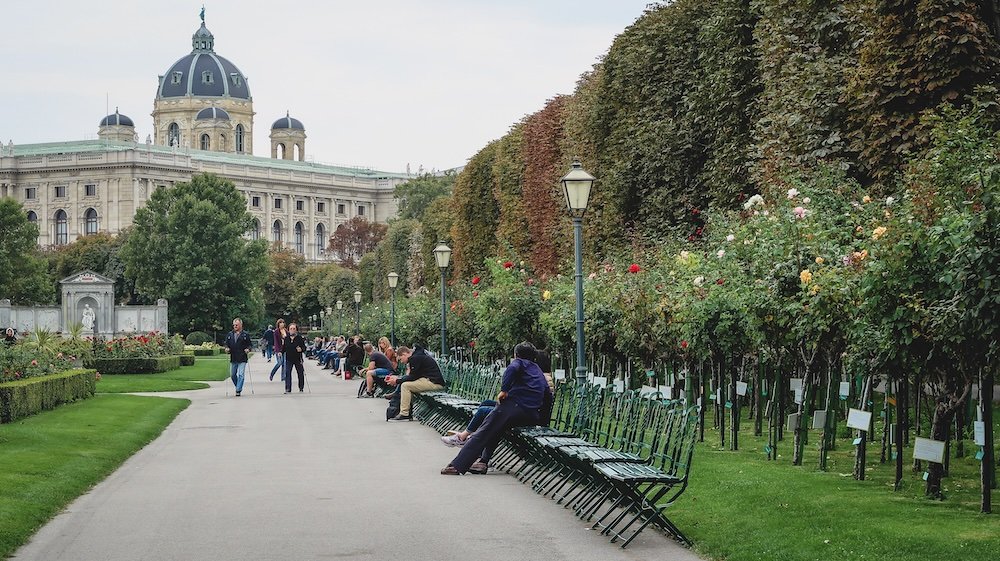
Overcoming Logistics
Vienna’s transport system is robust, from the quick U-Bahn to scenic trams. Multi-day passes keep costs in check if you plan frequent rides. For lodging, the Innere Stadt gives you prime location, while outer districts offer local authenticity at gentler rates. Day trips to the Wachau Valley, Salzburg, or Bratislava expand your Austrian journey or cross borders for a dash of variety. With thoughtful planning—like grabbing a morning train or pre-booking tours—logistics become manageable.
Savor the Moments
Amid your sightseeing hustle, carve out unhurried pockets. Linger in a coffeehouse over Sacher Torte, letting the atmosphere envelop you. Take a bench break in Volksgarten, inhaling rose-scented air and letting your mind drift. Meander the Ring at twilight, gazing at illuminated museums or the Opera’s façade. Viennese culture prizes reflection and conversation, so resist the urge to over-schedule. Let the city’s slower pace infuse your approach, enabling genuine experiences rather than a checklist sprint.
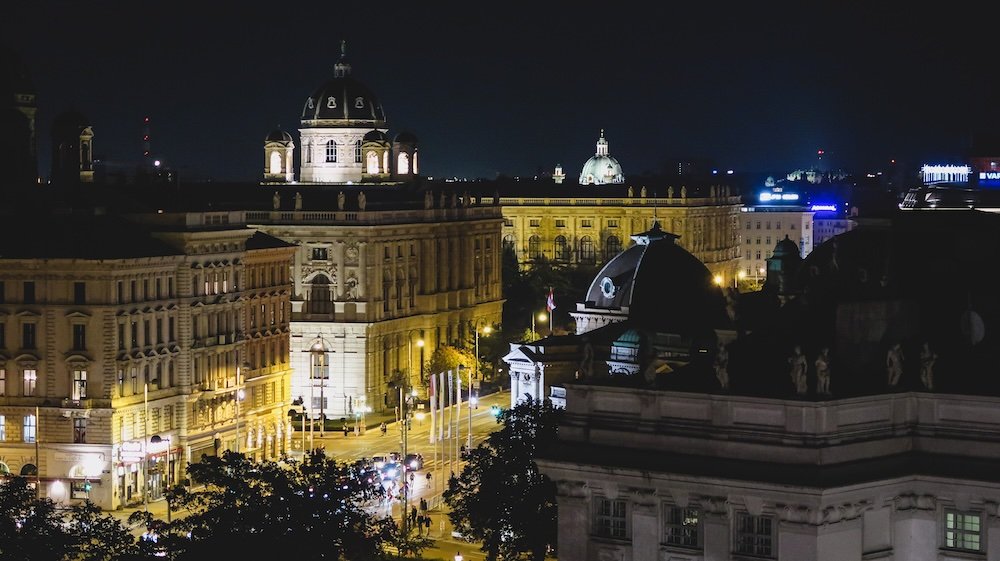
Leaving with Memories
Ultimately, Vienna offers a mosaic of music, art, culinary delights, and imperial grandeur. Each day can bring an unexpected highlight: a heartfelt organ performance in an old church, a breathtaking vantage from the palace gardens, or a blossoming rose bush in a quiet corner of the city. You might arrive drawn by its famed coffee culture or storied history, but you’ll leave with stories of warmth, architecture, and, yes, maybe a few extra pastries. That’s Vienna’s magic. May your trip be as enchanting and layered as the city itself—Prost!
